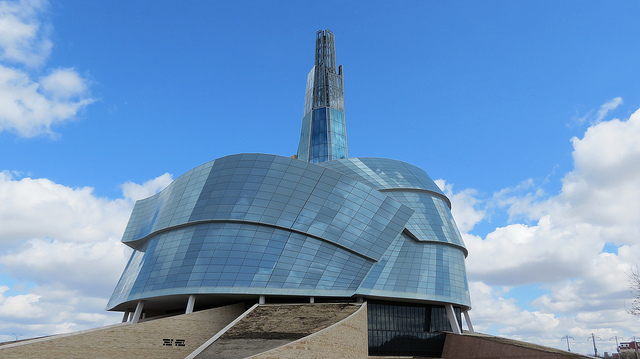
WINNIPEG — Myanmar’s leader Aung San Suu Kyi will be removed from a display at the Canadian Museum for Human Rights over the humanitarian crisis facing her country’s Rohingya Muslims.
The museum in Winnipeg has announced it will remove the Nobel Peace Prize winner from a timeline of human rights defenders and milestones.
But a large image of the Myanmar leader will remain on display in the gallery of honorary Canadians. The lights around the image have been dimmed and a sign has been placed in front explaining the current humanitarian crisis.
“She’s not a human rights icon. Why is she there? She is an absolute oppressor, there is no question about it,” Anwar Arkani, president of the Rohingya Association of Canada said Wednesday.
“Why do you keep her in the museum (with) a lot of honorable people who are disgraced by this lady’s presence.”
The Rohingya Association of Canada previously reached out to the museum calling for all references to Suu Kyi to be eliminated.
Arkani said the move is a step in the right direction.
Suu Kyi led the opposition to the military junta that ruled the country after 1962. Her goal was to create a democratic society. She was arrested after winning an election the military refused to honour, and was confined to her house as a political prisoner for nearly 15 years.
Suu Kyi won the Nobel Peace Prize in 1991 and was given honorary Canadian citizenship in 2007.
Most Rohingya in predominantly Buddhist Myanmar are denied citizenship and basic rights. Around 200,000 fled the country between 2012 and 2015.
The situation worsened last August when Myanmar’s military was accused of widespread human rights violations during a violent crackdown in response to an attack on police by Rohingya insurgents. Around 700,000 Rohingya fled to Bangladesh and thousands are believed to have died.
Suu Kyi and her National League for Democracy government have been criticized for failing to stop or condemn the atrocities.
The Rohingya Association of Canada has been working with the museum to create public programs for visitors and develop a 2019 exhibition to raise awareness about the crisis, said Angela Cassie, the museum’s vice-president of public affairs and programs.
The museum is also recording oral histories from the community to be included in a national collection.
“The betrayal is significant and it’s very painful for them to come through the doors and see her image,” Cassie said.
“What we chose to do is not change the history, but rather dim the light and keep the exhibition in place and add to the story so people understand the contemporary context.
“(It is) continuing to happen today and we should use these opportunities to raise that awareness and encourage others to add their voices to support those that are continuing to flee to escape violence and persecution.”